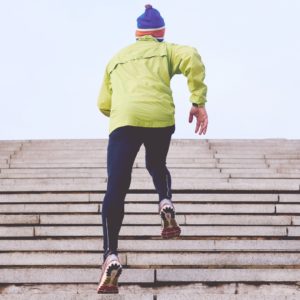
Historically, we have been taught that circulation is supported with exercise such as riding bikes, hiking, yoga, and other activities that are done either in a gym or outdoors. Here, we offer a few suggestions for supporting good blood flow without having to leave the house.
- Use the stairs. If your house has stairs, use them as a form of exercise. Just walking up and down the stairs for a few minutes can elevate the heart rate and deliver blood to all parts of the body. Walking stairs engages the calf and quadricep muscles, as well, which is necessary for pushing blood out of the legs.
- Perform calf raises. This exercise can be done using stairs or the floor. To pulse the calf muscles and cause contractions that push blood through the lower leg veins, stand comfortably on the floor and raise the heels. This shifts weight onto the balls of the feet. Once raised, pulse the heels up for a count of 20. Be sure to release the muscle contraction in between counts to avoid cramping. If it is difficult to raise both heels at once, raise one at a time.
- Breathe deeply. Circulation can be boosted with diaphragmatic breathing. This type of breathing can be comfortably done lying down. It involves breathing in slowly and deeply so that the belly rises. The rise of the belly signifies that the diaphragm is expanding during inhalation. This activates the lymphatic system to move wastes out of the body more readily.
- Elevate the legs. The veins in the legs must work very hard to push blood upward against gravity. Lying on the back with the buttocks and legs flat against a wall naturally helps blood move out of the lower extremities. If this position is not comfortable, an alternative is to lie comfortably on the back and place pillows or cushions under the legs to raise them above the level of the heart.
- Wear compression socks. People who have undergone vein treatments or who have varicose veins are often encouraged to wear compression stockings. The pressure that these garments place on the veins encourages the upward movement of blood with every movement.
The body requires movement to maintain optimal circulation. Whether performed in the home or outside, various exercises can provide the stimulation that is needed to achieve this. If you need assistance with a circulatory issue, we’re here to help. Call (855) 803-MIVC to schedule a visit to our Laurel, MD office.


Monday – Thursday: 9am – 5pm
Friday: 9am – 1pm
Saturday – Sunday: Closed